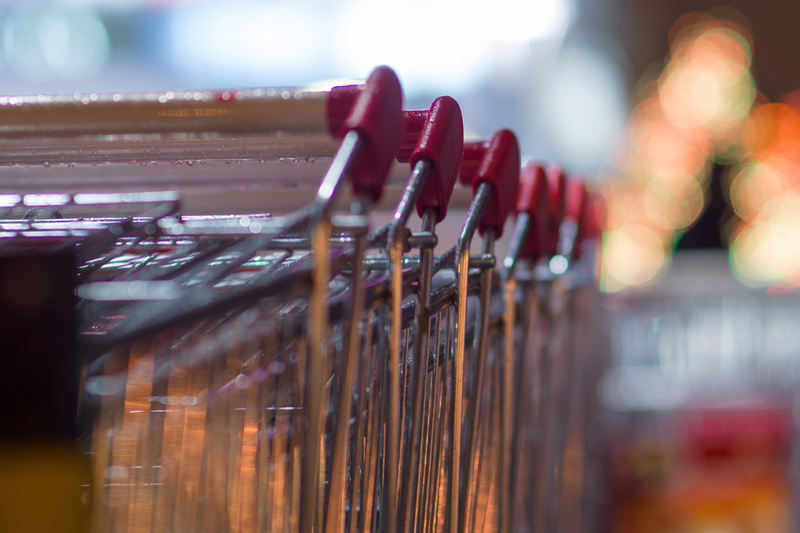By Connor Adams Sheets - Shrimp is Americans' seafood of choice, but the facts of the modern shrimping industry validate the old maxim that there's no such thing as a free lunch. Producing the world's shrimp supply destroys the environment, kills other sea creatures, and even supports human slavery.
Shrimp, which like lobster was once seen as a sort of “cockroach of the seas” unfit for people’s plates, is now big business, one that the U.S. shrimp fishing industry is not able to keep pace with: more than 90 percent of all shrimp eaten in the country today is farmed overseas, according to the National Oceanic and Atmospheric Foundation. In fact, the United Nations Food and Agricultural Organization (FAO) reports that the world faces a so-called aquaculture gap -- "the 80 million metric ton difference between our global wild harvest and the world's demand for healthy seafood,” according to John Connelly, president of the National Fisheries Institute.
In the race to fill that gap, many shrimp companies take steps that do great damage to the environment, from trawling the ocean floor to farming shrimp in fetid conditions. One particularly alarming statistic comes from the FAO, which estimates that 85 percent of the marine animals caught by shrimp trawlers around the world is classified “bycatch” -- aka: a species other than edible shrimp -- that is simply dumped back into the ocean, often after being maimed or killed by nets and machinery.
On Tuesday the story of shrimp grew even grimmer, as the Guardian released a report alleging that the world’s largest shrimp farmer, Thailand’s Charoen Pokphand Foods (BK:CPF), relies on slave labor for the production of some of the fishmeal that it feeds to its farmed shrimp.
The food giant, which provides prawns to many companies including the four largest international retailers -- Wal-Mart Stores Inc (NYSE:WMT); Tesco (LONDON:TSCO); Costco Wholesale Corporation (NASDAQ:COST); and Carrefour (PARIS:CARR). -- feeds its farmed shrimp fishmeal from suppliers that subject enslaved ship workers to beatings, torture and death, according to the Guardian’s investigation.
The article alleges that forces laborers are subjected to 20-hour workdays and brutal execution-style killings at sea, and slavery is endemic in Thailand’s fishing industry.
"Slaves forced to work for no pay for years at a time under threat of extreme violence are being used in Asia in the production of seafood sold by major U.S., British and other European retailers," the Guardian said.
The Guardian's report comes just months after an investigative report by the Environmental Justice Foundation, titled "Slavery at Sea," asserted that Thailand’s billion-dollar seafood industry is a breeding ground for human trafficking and exploitation.
For Beth Lowell, campaign director for seafood fraud at the ocean advocacy organization Oceana, the issues of slavery and worker exploitation are two of many reasons governments, consumers and companies need to take steps to ensure that shrimp and other seafood is coming from sustainable, reliable, above-board sources. The goal is “boat-to-plate traceability in all seafood,” she said.
“This is a perfect example of why you need traceability in your supply chain, so you can verify the sourcing of the fish you’re purchasing,” Lowell said. “Especially large companies that have big chunks of the market share should make sure they reduce risk in the market chain and ensure they’re not buying from fisheries or fishing vessels that are engaged in illegal activity.”
But shrimp is a dirty business, with a literally dirty product often caught and farmed in ways that degrade the environment and kill marine life. As the world looks to feed a population of 7 billion and rising that increasingly demands shrimp and other seafood for dinner, many activists, experts and environmentalists are sounding the alarm on the downsides of our obsession with the crustacean.
Shrimp wasn’t even on the menu for most Americans until the 1980s, when it started to gain broader popularity as aquaculture boomed and distribution expanded. Before then, less than one percent of the global shrimp catch came from farms, as the technology to farm shrimp simply wasn’t developed enough yet, and catching shrimp at sea was very expensive, according to Slate.
In 2001, shrimp surpassed tuna as the most popular seafood in the U.S. for the first time, according to the Vermont Law Review, and demand for the shellfish today accounts for about 25 percent of the country’s seafood consumption.
As millions of tons of shrimp and fish continue to be imported by the United States each year, much of which comes from countries like Thailand that do not have reliable traceability and anti-slavery regimes in place, it is important for consumers to learn how to navigate both a Red Lobster menu and seafood counter, Lowell recommends.
One invaluable resource, she said, is Seafood Watch, an industry-leading program run by the Monterey Bay Aquarium that offers ratings of various fish and shellfish based on their sustainability, environmental impact and healthfulness.
“Use things like the Seafood Watch program to guide choices in the right direction, then go to the store, ask your fishmonger for information, and if they don’t know the answer, maybe go with something else,” she said. “Be as informed as you can as a consumer to make the right decision.”
